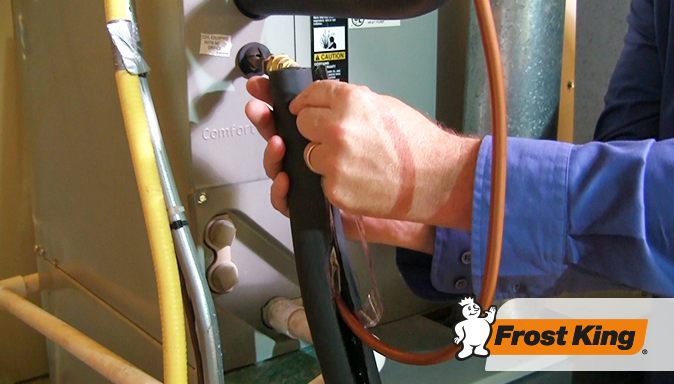Water pipes run throughout your home, delivering hot and cold water to the sinks, tubs, showers, and appliances you use all day long without you even thinking about it.
But when cold weather hits, any pipes that are exposed to temperatures below 32°F can freeze, forming ice that can cut off the water supply or—worst case scenario—expand and freeze, rupturing the pipe and letting loose a cascade of water right into your home.
Don't get stuck with an expensive emergency! Here’s what to do if a pipe freezes in your home.
How to Identify a Frozen Pipe
If you notice a decrease in water pressure or there’s suddenly no water flowing from a faucet when you turn on the taps during a cold snap, take action immediately to find and thaw the ice and get water moving again.
The first step is to locate the area that’s frozen. Depending on where the water freezes, only one or two faucets might be affected, so try to trace back from the faucet to find the frozen part of the pipe. Start by looking in the most obvious places first: unheated areas like basements and attics, unused rooms, rooms where the pipe runs along exterior walls, and uninsulated pipes. Look for frost or condensation on the exterior of exposed pipes and use your hands to find areas that are cold to the touch. (And, while we’re all for DIY, unless you’re an expert at tearing out walls, if you suspect a pipe has frozen in a wall—it’s time to call a licensed plumber.)
How to Thaw Frozen Pipes
The first step in thawing a pipe is to turn on the hot water spigot on the faucet and leave it in the “on” position. Then get to work thawing the ice gradually.
Grab a hair dryer, point it towards the spot that’s frozen, and blast it on the lowest setting until the ice melts and water starts flowing. It may take 30 to 60 minutes to clear the ice so be patient. If you don’t have a hair dryer, wrap an electric heating pad or warmed towels around the pipe. It can also help to set up a space heater near the pipe to warm the surrounding air. Keep heat on the pipe until water pressure is restored to the faucet.
If the pipe has ruptured, you’ll know immediately: water will be everywhere. If this happens, turn off the main water supply at the main shut-off valve. But you also need to check for smaller leaks that might not be as noticeable but can still cause big damage. Once the blockage has thawed, carefully wipe the pipe with a cloth or paper towel to check for drips and leaks. If you find any damage, repair it or call a plumber.
How to Prevent Pipes from Freezing
Frozen pipes are a headache for homeowners, so it pays to take steps to stop them from freezing in the first place.
Uninsulated pipes are the most vulnerable to freezing, so head to your basement, crawl space, attic, and any other area with exposed pipes to see if any pipes lack insulation. Frost King’s Tubular Foam Pipe Insulation and Self-Sealing Tees and Elbows easily slip over hot and cold water pipes to form a tight seal, and they’re self-sealing so all you have to do is press the adhesive on the slit edges together to seal. Watch this video to learn about the different types of pipe insulation and which one is right for your job:
You should also take these precautions when temperatures drop:
• Running water doesn’t freeze, so turn faucets on to a pencil-thin trickle.
• Leave sink cabinets open to allow warm air to circulate around the pipes.
• Set the heat to at least 55 degrees Fahrenheit when you’re not home.
• Keep the garage door closed, and keep interior doors open so warm air circulates from room to room.
